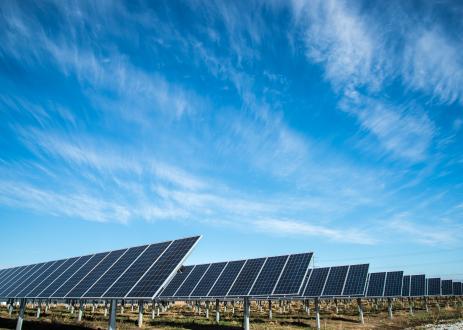Power Sector Opportunities for Reducing Carbon Dioxide Emissions: Minnesota

About the Power Sector Opportunties Fact Sheet Series
This series of fact sheets aims to shed light on these opportunities by illustrating the CO₂ emissions-reduction potential from measures in a variety of states. For example, states could build off of existing initiatives like renewable portfolio standards, energy efficiency standards, and other policies as well as use tools like greater efficiency at coal plants, increased use of combined heat and power, and fuller utilization of unused capacity at natural gas plants. We show how emissions savings from these existing policies and infrastructure stack up against the reductions that could be required under forthcoming standards.
概要
President Obama announced the first-ever National Climate Plan for the United States in June 2013. Under the plan, the U.S. Environmental Protection Agency (EPA) will set carbon pollution standards for power plants. In September 2013, EPA introduced emissions standards for new power plants and is expected to announce standards for existing plants in 2014. Once EPA establishes those standards, states will develop and implement their own plans to achieve the necessary emissions reductions.
In this fact sheet, WRI examines how Minnesota can use its existing policies and infrastructure to reduce power plant emissions.
Executive Summary
WRI分析发现,到2020年,明尼苏达州可以将其二氧化碳排放量降低31%。这些减少将达到或超过中等雄心勃勃的EPA发电厂排放标准。尽管EPA尚未宣布其发电厂排放标准的外观,但WRI基于两个假设标准的分析。在这些情况下,到2020年,明尼苏达州将需要将其二氧化碳排放量减少在2011%以下的24%至30%的范围内。
CO2 reduction opportunities using existing policies include:
Increasing renewable energy.明尼苏达州的可再生能源标准要求该州公用事业公司的某些电力来自可再生能源:到2020年,该州最大的公用事业公司,Xcel Energy,到2025年,对于大多数其他公用事业,到2020年,到2020年,到2025年。此外,到2020年,公用事业必须向太阳能提供1.5%的销售额。通过增加可再生生成状态来满足这些需求,将在2020年将CO2排放量降低5%。
满足能效目标。Minnesota’s existing efficiency standard requires utilities to implement programs that help save energy.Meeting this standard could lower Minnesota’s CO2 emissions by 14 percent in 2020 compared to what emissions would be in the absence of the standard.
使用可用基础设施的二氧化碳减少机会包括:
现有天然气厂的使用增加。Minnesota’s most efficient natural gas plants—combined cycle (NGCC) units—generated much less electricity than they were capable of producing in 2011.Running existing NGCC plants at 75 percent can reduce CO2 emissions by 30 percent below 2011 levels in 2020.
提高现有的燃煤电厂效率。Existing coal plants could save energy by upgrading their equipment and making other operational improvements.到2020年,提高燃煤电厂效率可以降低二氧化碳排放量低于2011年的水平1%。
Using more combined heat and power (CHP).明尼苏达州可以在大学,医院和制造设施等网站上,可以在现有设施上建造更多的CHP系统(使用废热来发电更有效地发电。Increasing the use of CHP could help the state meet its energy efficiency targets.
明尼苏达州已经采取了措施,可以实现大量的二氧化碳排放减少,并有机会通过建立迄今为止的进步来实现更大的减少。通过满足其现有清洁能源标准的要求,利用可用的基础设施和未充分利用的资源,明尼苏达州在近期处于强大的地位,以遵守EPA的雄心勃勃的EPA标准,如果EPA追求EPA。
Projects
-

美国气候必威官网是真的吗
访问项目Advancing climate action on federal, state and local levels to ensure a sustainable, prosperous and just future for all Americans.
Part of 必威官网是真的吗
